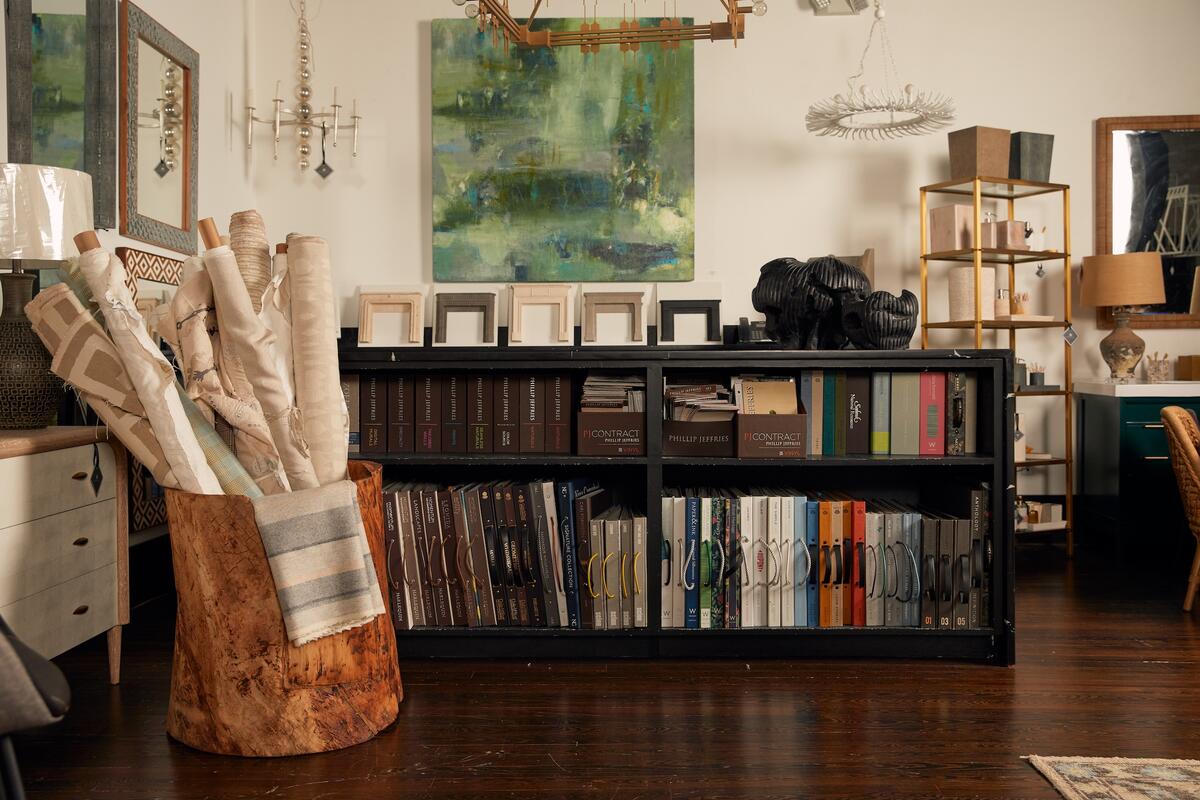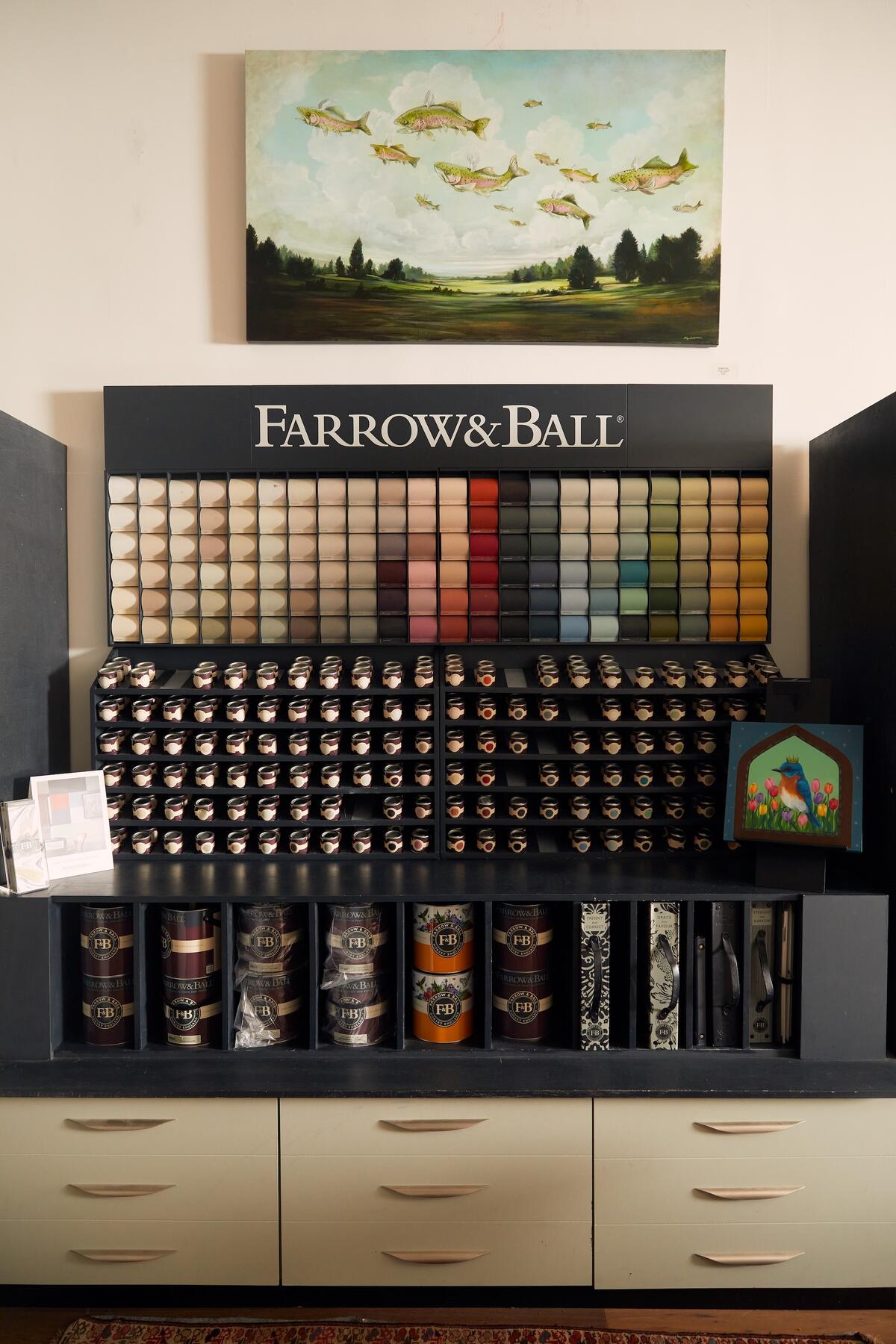In Business of Home’s series Shop Talk, we chat with owners of home furnishings stores across the country to hear about their hard-won lessons and challenges, big and small. This week we spoke with designer and Charleston native Michael Mitchell, who owns an eponymous shop in the city’s design district.
Opened in 2009, Mitchell’s business has grown steadily, ultimately moving to a massive space in an art deco building on the tourist-thronged King Street. Yet his eye is still trained toward what’s new and next, he explains to BOH, starting with a name change: The interior design services, design center and gallery will soon be known by his full name, Michael Mitchell. Ahead, the designer describes the reason behind the switch, the mantra for his business operations, and how he’s welcoming the influx of new residents to his beloved city.
What was your career like before the store?
I’ve been an interior designer for 28 years. When I moved home to Charleston from New York, we didn’t have the resources [here] that I needed to do my job. I was spending a lot of time traveling, going back and forth to showrooms in Atlanta and New York, so I built this place out so that I could shop in it. That was my joke: “I built it for me to shop in, and I hoped you would too.” I’ve got a massive fabric library [and] cabinet hardware and hardwood floors, and I’m the Farrow & Ball dealer. We’ve got tons of upholstery lines, and I collect antiques for the store. We can react and move quickly because everything we need is here.

Has the store and its merchandise changed very much since opening? Have there been any pivots along the way?
It’s changed a whole lot. I have a full-service rug gallery now. We’ve become a resource for furniture and accessories and design work. I think the way our community has looked at my business has changed a great deal. It’s an interesting place to come and walk around. It’s a menagerie of things.
What is the aesthetic of the store? I read the phrase “twisted traditional” on your website.
The aesthetic of my store is truly just the way I work in my own home. I buy things I love and that I think I can place. It’s fairly well traveled: There are things here from India and Italy and Spain and Africa, all over Asia. I happen to really like Asian antiques. It is a mix of things that work in harmony together, so the display areas look well-collected. Everything I buy for a project or for my store I think is really beautiful on its own. There’s no filler, no fluff.
Who is your typical customer?
A lot of foot traffic—60 to 70 percent of that is tourists. People walk in and say they’ve never seen anything like this: “There’s such a cool mix!” It leads to a lot of work, so we end up hopping on planes and flying all over this country and the world doing jobs because of [the store]. I also have small cash-and-carry items. You can’t fly home with a sofa, so I’ve got small art.
Tell me more about the art.
I’ve collected original art since I was in my early 20s. I believe in original art for a lot of reasons. I believe that people leave their soul in their work, so when I’m looking for artists, I’m always looking for people who are nice. I don’t do business with anybody who’s not nice. Doesn’t matter if it’s at my house, here [at the store], or even the car wash I go to—people have to be nice, or I’m not interested.
The art is also very collected. It’s not genre-focused. I have photographers, landscape painters, abstract artists, portrait artists. Everything is mixed in the way that I would mix it in a house. I believe an art collection shouldn’t be just flat. You’re not going to find just marsh scenes in here because that’s boring. And my artists are from everywhere. One thing I have that other galleries don’t is a lot of large artwork. I have big walls. My store is 12,000 square feet. I’m the largest independent retailer on the peninsula.
Have you been in this same space since the beginning?
No, I was down the street for 10 years in a smaller location, and my landlord expressed that she wanted to sell the building and was not going to renew my lease. Instead of taking that as a defeat, I said, “You know what? I’m going to do what I’ve always wanted to do, which is to have a big store that truly has everything in it.” That’s when I started selling the hardwoods and the stone mantels and the rugs—all the extra layers that were hidden in our design office are now out in the showroom. It’s changed the way that we do business. Somebody can show up here with their floor plan and we can knock a house out with them in a day. That’s not something a lot of people can do. It’s because of the size of my rug gallery, my fabric library, all the different upholstery collections we carry, the art. We just help guide you through it.
Will you tell me about a particularly long-standing or special vendor relationship?
The longest relationship is probably with Hickory Chair, a company I have always adored. I’ve always liked their designers. I’ve been with them through two bankruptcies and three owners, and I still just love ’em. I love that the Shuford family owns the company now, so you don’t have to worry about any financial problems. You could do an entire house with just Hickory Chair because it’s so diverse; it’s got very traditional and very modern pieces, and it’s really the way that I decorate: pulling different genres, different periods, different finishes.
What is your favorite category?
Rugs are the foundation of every room, and that’s generally where we start when we’re doing design work. We have hand-knotted rugs only. We work with weavers from all over the world, and we import [the rugs] ourselves. It’s a different piece that offers something incredibly special to our clients. We’ve got antique rugs right up to very modern Tibetan wool rugs. I have a 125-year-old sarape at my house that came from here, and it’s a museum-quality rug, but we have $2,500 hand-knotted rugs too.
Is there a certain item that flies out the door?
We are known for our piggy banks. Harry Allen is the artist. I’ve carried those for 15 years, and we have sold something like 20,000 of them. It’s some obscene number. They’re $250 a pop, and they just fly. It’s crazy.

What is your general approach to sourcing? Is it in-person markets and shows, travel, or online platforms?
Yes, all. I don’t miss a market. I go to High Point, New York; I think I’m going to Vegas this year. I’ll do the events at ADAC on the antique front. I bring containers in from Europe a couple of times a year. I also go to places like Round Top. At High Point, I’m never not shopping, never not looking.
What is your e-commerce presence like?
We’re in the middle of redesigning that. I’m getting ready to relaunch our website, but we’ve done well with it in the past. It’s a lot of art and accessories on e-commerce.
Tell me about the new name and relaunch.
It is part of my personal growth. Eighteen years ago, I opened my firm as Michael Mitchell 17, and when I was married, my husband and I changed the name to Mitchell Hill. We have since split amicably. I’m the face of the brand, and it makes more sense to [go back to] calling the place Michael Mitchell, because that’s who they’re looking to. I’m frankly tired of being called “Mitchell.” It’s not my [first] name!
How does it feel to have a fresh start after being established for so long?
I think the transition will pretty much go unnoticed, to be honest. We’re going from Mitchell Hill to Michael Mitchell. I think it makes me more recognizable, which is important, just by nature of what we do. It’s about streamlining more than anything.
Will there be new branding?
The logos will be very similar. The fonts are not changing. It’s going to be a very clean transition. There’s not going to be a light show. There’s not going to be someone jumping out of the side of a van.
Tell me about Charleston’s design scene. I haven’t been to many cities with a design district as accessible and delineated as yours.
I’ve lived other places where the design community was not as nice as we are here. Here, everybody’s so nice. We all root for each other. Nobody’s competing for projects. If somebody wants to work with me, they didn’t want to work with you, and if they don’t want to work with me, they wanted to work with you. I’ve messaged a designer friend and said, “My client saw this coffee table in an article. Where did you get that?” She sent me her purchase order, her canceled check and the furniture maker. I mean, we do that for each other here. There’s no cattiness, no nastiness. I repost people’s articles. I see a picture of something they posted, and I’ll repost it and say how beautiful [their work is]. People here are just nice, and the people who are not nice are not part of our community.
That’s wonderful.
There’s a group of us who are doing more sophisticated work that’s more layered and interesting and luxurious. A blue-and-white beach house? I couldn’t care less. I mean, anybody can do a blue-and-white beach house. There’s a lot of talent in this town, a whole lot of talent. We have artisans making furniture and craftspeople who are weavers, making fabrics, block printing. Wallpaper is happening. Urban Electric is here, for God’s sake, so hand-crafted lighting is happening. All of these exciting things are going on.
I didn’t realize how incredibly special Charleston was until I came home. I feel grateful for the people who are moving here. It’s changing the landscape of our city, but I think it’s for the good. The perspectives are no longer narrow and similar. There’s a lot more diversity. Not financial diversity—there’s certainly not a lot of that. But understanding people’s perspectives has just been great.

Charleston has changed a lot since the pandemic, right?
Our property value shot through the roof. My house is worth four or five times what I paid for it. But I also dumped too much money into renovating. But yeah, Covid changed everything. A lot of people were moving here from “off,” which is what locals call it when people move here—“wherever the hell you came from, off and away.” Folks are moving here from Boston or Ohio or Detroit. We’ve a lot of Texans, a lot of New Yorkers. I love it because I always tell people I work like a Yankee. I’m not going to sit around and talk about talking about it; I’m going to get it done. Everything that I miss about New York is now happening here.
Are there any challenges to operating in Charleston?
Well, hurricanes are always brewing, but I’m local, so they don’t scare me. When there’s a storm coming, I just go get supplies to make chili and get some ammunition, because I’m a Southern boy from the country, and that’s what we do. Right now, the biggest [operational challenge] is no different than it is in any industry: Everybody’s just figuring out how to best advertise, how to drive that traffic to the store, how to stay relevant, how to stay present, how to be found.
What are your greatest hopes for the future of the business?
I want to buy a warehouse. I want to have my [own] delivery trucks. I want to start having our own branded product lines, which we’ve been working on. I’m going to come up with my own rug collection. But I’m really pushing to have more branded product, because we’re in a tourist environment. I want people, when they come to Charleston, to say, “I need to go over there for a refill on these candles that I love.” I’m going to start mixing Farrow & Ball paint in the store, which is going to be a complete game changer. Also, we’re developing a “shop small” section, because, like I said, I travel all over the place. I’m coming up with gift ideas: Italian glass or candles made in France—things you’re not going to be able to find at another retailer.
What’s your favorite type of day as a store owner?
I love hanging out in the showroom on a Saturday and meeting people. That’s where conversations are sparked. It’s like hosting an open house or a cocktail party. I love the interaction with the public.





























